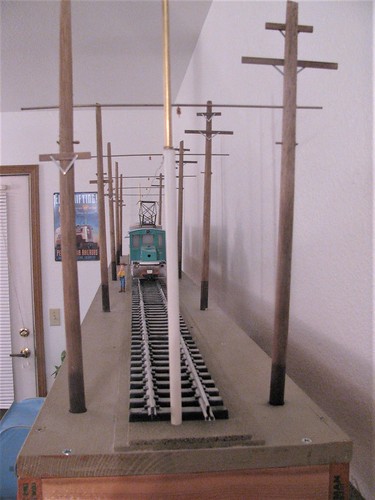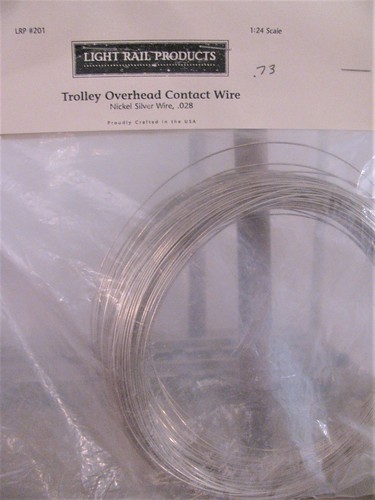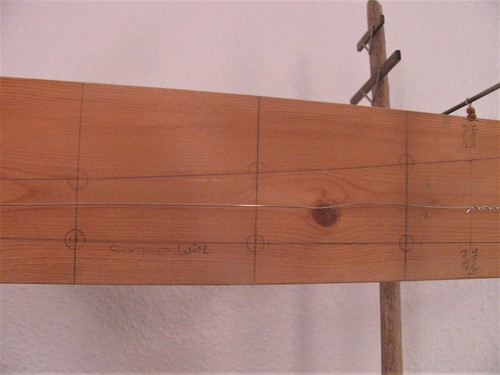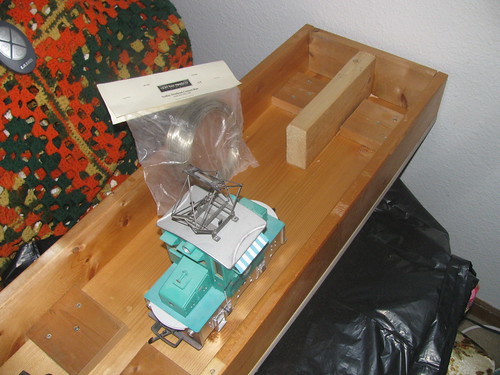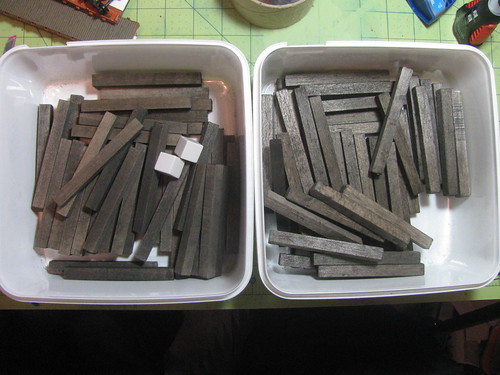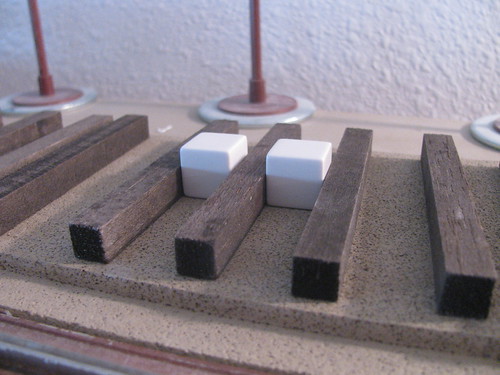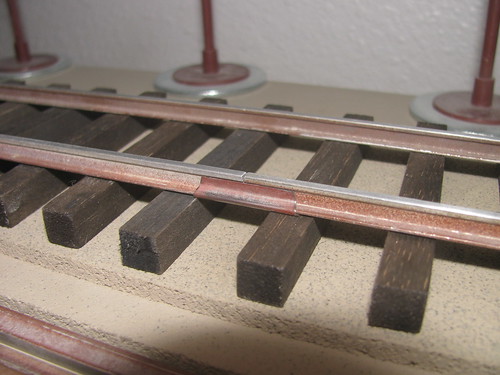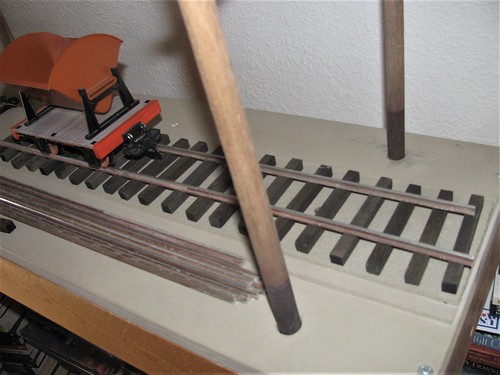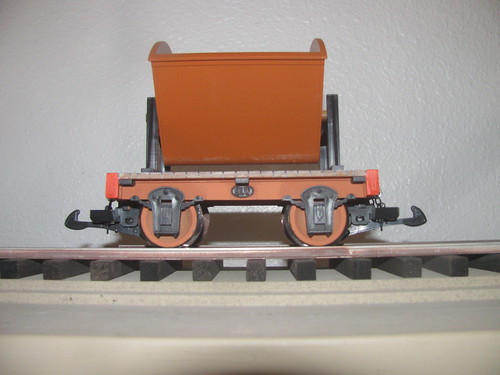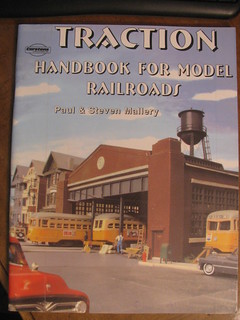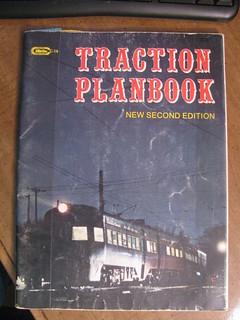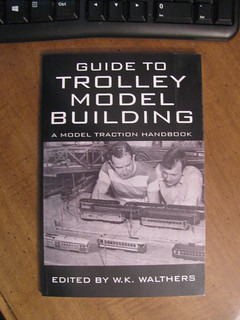Yesterday and day before I got shelf down, worked on, and replaced without causing back trouble! Well, at least not immediate trouble in addition to that which was already occurring for a day or two. Perhaps it was borderline dumb to try it while having a broken foot and misbehaving back as it does at intervals - but I did get to drill holes and saw things apart, which I seem to like to do when frustrated with life, the universe, and everything.
The Process:
Took the 8ft shelf down. Glued and screwed blocks in; blocks are scrap bits from local lumber yard over by a pretty decent local diner. Trolley wire anchors are from 1/4 diameter by 3ft long brass rod from Orscheln Farm & Home and springs I’d gotten a while back from Browning Hardware, the owners of which have since retired and closed the store.
White tube over brass rod is to fix height of contact wire anchors. Intent is to use brass tube but it turned out I didn’t have the right size so the ages old plastic tube got drafted for the interim.
Rod was cut in half, has 3 inches planted in block under shelf
Wire does not follow centerline of track - is skewed so as to move across pantograph and not wear groove in contact shoe, as per the prototype.
If it were a pole contact like old trolleys had the wire would follow centerline.
Next thing to do is build catenary suspension wires.
That might be later in the year.
Drew the catenary template several years ago with intent to build catenary in sections, solder contact wire joins, then anchor wire ends. We shall see what eventually develops.
There is also a pole angle and wire height template made from lacquered matboard.
Eventually the contact wire will be live and trains can pull power in through pantographs.
Might even do one like I did with a couple HO and On30 and alter it to forever be usable only on live overhead and both rails return type wiring. Intent for that is to make a reverse loop to reverse loop display module for club open houses.
Track on shelf is temporary. Is from Bachmann ‘Big Hauler’ G scale train set and will eventually be replaced with aluminum rail bought secondhand on basswood ties.
Have the ties cut and stained, somewhere: have to get motivated to find them at some point. Rail lengths have been kept on this shelf.
Need to acquire rail joiners.
Wire anchor pole looks centered in track because track is not centered on roadbed and is shifted to viewers’ left
Gee, you’d think he’d never before seen someone plane tapers on dowels.
Georgie cat has gotten a bit bigger since I started this slow as continental drift project.

